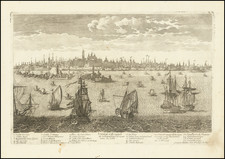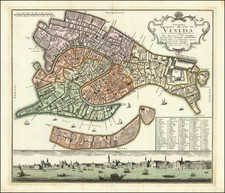Large engraved view of Venice by engraved for Johannes Blaeu in about 1670, printed on two sheets.
This magnificent work was originally intended for Blaeu's Town Book of Italy, but as a result of the fire in the Blaeu workshop in 1672, it was not actually published until the plates were acquired by Pierre Mortier and published in 1704.
Pierre, or Pieter, Mortier (1661-1711) was a Dutch engraver, son of a French refugee. He was born in Leiden. In 1690 he was granted a privilege to publish French maps in Dutch lands. In 1693 he released the first and accompanying volume of the Neptune Francois. The third followed in 1700. His son, Cornelis (1699-1783), would partner with Johannes Covens I, creating one of the most important map publishing companies of the eighteenth century.
Joan, or Johannes, Blaeu (1596-1673) was the son of Willem Janszoon Blaeu. He inherited his father’s meticulous and striking mapmaking style and continued the Blaeu workshop until it burned in 1672. Initially, Joan trained as a lawyer, but he decided to join his father’s business rather than practice.
After his father’s death in 1638, Joan and his brother, Cornelis, took over their father’s shop and Joan took on his work as hydrographer to the Dutch East India Company. Joan brought out many important works, including Nova et Accuratissima Terrarum Orbis Tabula, a world map to commemorate the Peace of Westphalia which brought news of Abel Tasman’s voyages in the Pacific to the attention of Europe. This map was used as a template for the world map set in the floor of the Amsterdam Town Hall, the Groote Burger-Zaal, in 1655.
Joan also modified and greatly expanded his father’s Atlas novus, first published in 1635. All the while, Joan was honing his own atlas. He published the Atlas maior between 1662 and 1672. It is one of the most sought-after atlases by collectors and institutions today due to the attention to the detail, quality, and beauty of the maps. He is also known for his town plans and wall maps of the continents. Joan’s productivity slammed to a halt in 1672, when a fire completely destroyed his workshop and stock. Joan died a year later and is buried in the Westerkerk in Amsterdam.

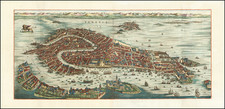










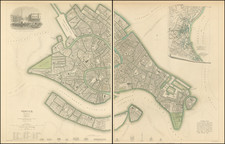
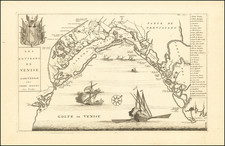
![[Venice] Venetia](https://storage.googleapis.com/raremaps/img/small/75080.jpg)
![[Medieval Venice] Ichnographia inclytae Urbis Venetiarum Desumpta ex Codice Membranaceo Saeculi Decimi quarti Marcianae Bibliothecae signato CCCIC et Publicaum producta Curante Thoma Tementia A.R.S. MDCCLXXX](https://storage.googleapis.com/raremaps/img/small/90765.jpg)
